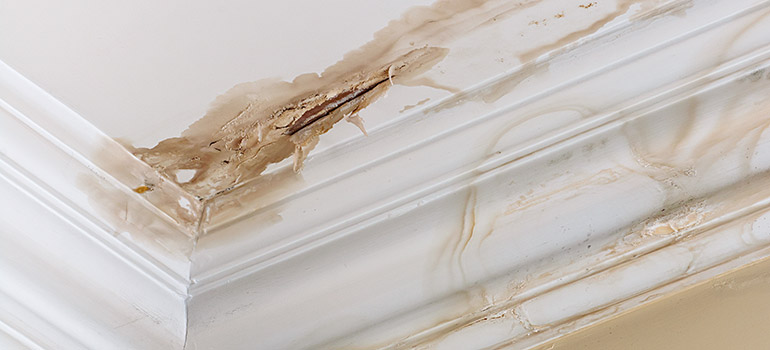Do's & Don'ts of Water Damages.
Do's & Don'ts of Water Damages.
Blog Article
How do you feel when it comes to What You Can Do At Home To Prevent Fire And Water Damage?

Water offers life, water invasion on components where it's not intended to be can result in damage. If the water soaks right into your structure, it can peel off away surface areas and also erode the structure. Mold and mildew as well as mold likewise prosper in a wet environment, which can be dangerous for your wellness. Residences with water damages odor old and moldy.
Water can originate from lots of sources such as tropical cyclones, floodings, ruptured pipelines, leakages, as well as drain issues. In case you experience water damages, it would certainly be good to understand some safety preventative measures. Here are a few standards on just how to deal with water damage.
Do Prioritize Home Insurance Insurance Coverage
Water damage from flooding as a result of heavy winds is seasonal. You can additionally experience an abrupt flooding when a damaged pipe instantly ruptures right into your home. It would certainly be best to have house insurance coverage that covers both disasters such as natural calamities, and emergencies like broken plumbing.
Do Not Neglect to Switch Off Energies
In the event of a catastrophe, particularly if you reside in a flood-prone area, it would certainly be advisable to switch off the major electric circuit. This removes power to your entire residence, protecting against electric shocks when water is available in as it is a conductor. Do not fail to remember to turn off the main water line valve. Furniture will relocate about as well as trigger damage when floodwaters are high. Having the primary valve shut off prevents further damage.
Do Remain Proactive as well as Heed Weather Condition Signals
Storm floods can be very unforeseeable. If there is a background of flooding in your community, remain ready as well as proactive. If you live near a creek, lake, or river , pay attention to evacuation cautions. Take out prized possessions from the ground floor as well as cellar, then put them on the highest feasible level. Doing so decreases possible home damages.
Do Not Neglect the Roofing System
You can prevent rain damages if there are no openings and leaks in your roof. This will certainly avoid water from streaming down your wall surfaces and soaking your ceiling.
Do Focus On Little Leakages
A ruptured pipeline does not happen overnight. Normally, there are warnings that show you have compromised pipelines in your house. As an example, you may notice gurgling paint, peeling wallpaper, water touches, water discolorations, or trickling audios behind the walls. Eventually, this pipeline will rupture. Ideally, you ought to not wait on points to escalate. Have your plumbing repaired prior to it results in huge damage.
Do Not Panic in Case of a Burst Pipeline
When it comes to water damages, timing is vital. Hence, if a pipeline bursts in your home, immediately closed off your primary water shutoff to cut off the source. Call a reliable water damage remediation professional for assistance.
Water offers life, water invasion on parts where it's not supposed to be can result in damages. Residences with water damage scent old and stuffy.
Water damages from flooding dues to hefty winds is seasonal. You might discover gurgling paint, peeling wallpaper, water streaks, water discolorations, or dripping sounds behind the wall surfaces. When it comes to water damages, timing is essential.
Some Do's & Don't When Dealing with a Water Damage
DO:
Make sure the water source has been eliminated. Contact a plumber if needed. Turn off circuit breakers supplying electricity to wet areas and unplug any electronics that are on wet carpet or surfaces Remove small furniture items Remove as much excess water as possible by mopping or blotting; Use WHITE towels to blot wet carpeting Wipe water from wooden furniture after removing anything on it Remove and prop up wet upholstery cushions for even drying (check for any bleeding) Pin up curtains or furniture skirts if needed Place aluminum foil, saucers or wood blocks between furniture legs and wet carpet Turn on air conditioning for maximum drying in winter and open windows in the summer Open any drawers and cabinets affected for complete drying but do not force them open Remove any valuable art objects or paintings to a safe, dry place Open any suitcases or luggage that may have been affected to dry, preferably in sunlight Hang any fur or leather goods to dry at room temperature Punch small holes in sagging ceilings to relieve trapped water (don't forget to place pans beneath!); however, if the ceiling is sagging extremely low, stay out of the room and we'll take care of it DO NOT:
Leave wet fabrics in place; dry them as soon as possible Leave books, magazines or any other colored items on wet carpets or floor Use your household vacuum to remove water Use TV's or other electronics/appliances while standing on wet carpets or floors; especially not on wet concrete floors Turn on ceiling fixtures if the ceiling is wet Turn your heat up, unless instructed otherwise
I am just very serious about 5 Home Safety Tips To Reduce The Risk Of Fire And Water Damage and I really hope you liked the piece. Appreciated our blog entry? Please share it. Help others find it. Thank you for taking the time to read it.
Report this page